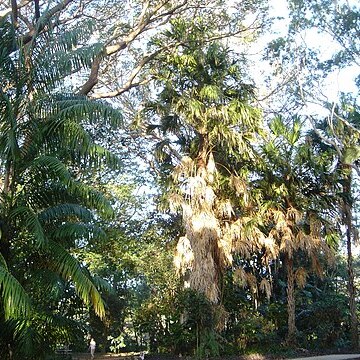A large fan palm. It grows up to 20 m high and 20 cm across the trunk. The trunk is pale grey. The trunk has rings along it. The leaves are fan shaped. They are 1.5 m across. The leaves are irregularly parted with deep segments. The leaf stalks are reddish to orange. The leaf stalks are armed with very small robust spines. The flowers are stalkless and in small groups on small branches. The fruit are round or very slightly kidney shaped and blue. They are 11 to 15 mm across. They occur in large clusters.

